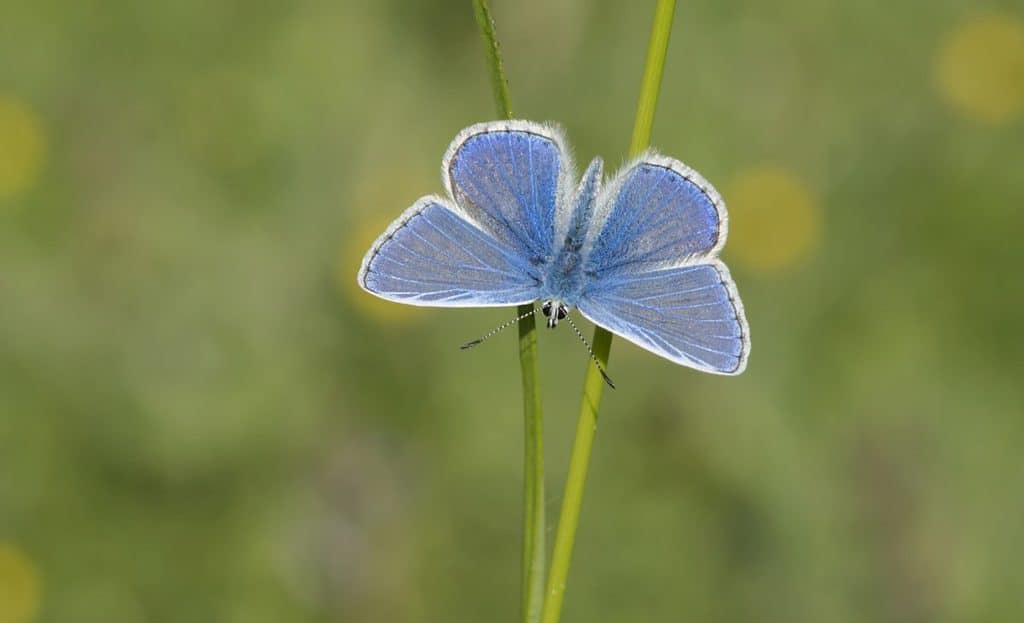A beautiful blue butterfly which has been struggling for the last 40 years could be making a comeback in Scotland, wildlife charity Butterfly Conservation can reveal.
The Common Blue is the most widespread of the UK’s blue butterflies and during the record-breaking hot weather in 2018, the butterfly’s numbers increased by 29% across Scotland compared to the year before.
Now, with the UK experiencing another heatwave and the Met Office forecasting continued warm weather for Scotland throughout August, experts are predicting the Common Blue could see its best ever summer.
Butterfly Conservation is also keen to see if 2019 really has been a Painted Lady summer – a once in a decade butterfly phenomenon when millions of the butterflies arrive en masse from Europe and Africa.
People across the UK counted more than 30,000 in just two days last week, with the majority of sightings recorded in Scotland and great clouds of Painted Lady butterflies being seen across the country since then.
People are being asked to look for the Common Blue and Painted Lady and record their sightings as part of the Big Butterfly Count – the largest survey of its kind in the world.
The Common Blue is not typically found in gardens, preferring unimproved grassland such as downland, woodland clearings, heathland and even sand dunes.
Butterfly Conservation’s Senior Surveys Officer, Dr Zoe Randle, said: “People should be able to spot these butterflies in many places, especially where the wildflower Common Bird’s-foot-trefoil is found, as this is the main foodplant for their caterpillars.
“The Common Blue did really well in Scotland last year and just a few weeks ago near Butterfly Conservation’s Wester Moss reserve in Stirling, we counted hundreds of them in just one day.
“Scotland has experienced some thundery showers recently and more are expected throughout August, but temperatures will stay warm, which means when the sun does come out, this butterfly will still be found flying in good numbers across the country – especially in eastern parts, which could see the best of the warm weather to come.
“If people take part in the Big Butterfly Count, we’ll have a much better idea of whether this butterfly’s fortunes have turned around, or if the Common Blue still needs our help.
“We’re also keen for people to keep recording any Painted Lady sightings, as this could be a record year for them, so keep counting and we’ll reveal the total number after the 11 August!”
Common Blue males have unmarked, bright blue upperwings, but females have orange crescents and dark spots near the outer edges on a ground colour that varies from purple-blue to dark brown, with a mere tinge of blue near to the body.
The underwings of both sexes have numerous black spots, with white halos and orange marks around the edges.
People can take part in the Big Butterfly Count anywhere, but two events are happening in Edinburgh, including a cycle count on 6 August and a guided butterfly walk around Holyrood Park on Saturday 10 August – the last weekend of the Big Butterfly Count.
Other events on Saturday 10 August include a chance to manage butterfly habitat and do a Count in Airdrie, North Lanarkshire and a guided butterfly walk near Pitlochry in Perthshire.
More information can be found at: http://www.butterfly-conservation.org/ScotlandCountevents
The Big Butterfly Count, sponsored by B&Q, runs until Sunday 11 August. Taking part in the Count is easy – find a sunny place and spend just 15 minutes counting every butterfly seen and then submit sightings online at. http://www.bigbutterflycount.org/






